|
|
Club Expedition to
Alaska 2012 |
|
|
News items or reports on club activities
should be sent to website@liverpoolcanoeclub.co.uk |
||
Club Expedition to 
This clubs`
expedition to
Our friend Tom
Pogson (opposite) delivered and collected the kayaks in
Pete Thomas, Carole Thomas, Debbie Hughes, Vicky
Howell, Steph Long, Frankie Annan, Keith Steer, Kirk Williams and Ian
“Hey
Bear”…….
|
|
|
|
|
|
|
Carole Thomas |
Debbie Hughes |
Frankie Annan |
Ian Bell |
|
|
|
|
|
|
|
Kirk Williams |
Pete Thomas |
Steph Long |
Vicky Howell |
The flight out and getting to
Whittier
|
|
|
Garry, our driver
from |
With all the increases in fuel prices the flights seem to have gone up by about
£50 each year to around £1100 this year.
5 of us booked flights together leaving from
Wash and showered we went down for coffee at 9:00am and jumped on the Go
Purple bus, which was now purple after Gary had decided that we needed a bigger
 van to get
the 9 of us and all our gear and food to Whittier. We just had time to sort some of our gear
before being met by Tom Pogson with the boats.
We had plenty of time to pack, re-pack and launch opposite the Ferry in
van to get
the 9 of us and all our gear and food to Whittier. We just had time to sort some of our gear
before being met by Tom Pogson with the boats.
We had plenty of time to pack, re-pack and launch opposite the Ferry in
Day One (Friday) –
Having travelled for around 25 hours most of us arrived around midnight tired
but excited. We were met by “Go Purple travel” and transferred to the
motel. Vicky had arrived at around
midday and seemed happy to meet us. We arranged to be picked up at 9 for the
journey to
The journey to Whitter was only about 1 and half hours but we would had
to wait for the tunnel to open our way.
As we had time, the driver did his tour guide bit and pointed out things
along the way. He made a couple of stops at local viewpoints, one to show us
some  strong
tide currents in the area and at one for the fish viewing platforms (it was the
middle of the salmon run). We arrived at the tunnel and after a short wait for
the traffic flow to change direction we were off. The tunnel is a single track
rail tunnel which has recently been opened to road vehicles but has a toll and
traffic control so you wait in turn for
your direction or the train.
strong
tide currents in the area and at one for the fish viewing platforms (it was the
middle of the salmon run). We arrived at the tunnel and after a short wait for
the traffic flow to change direction we were off. The tunnel is a single track
rail tunnel which has recently been opened to road vehicles but has a toll and
traffic control so you wait in turn for
your direction or the train.
The transfer bus dropped us at 1.30pm by the ferry terminal. This was to be the launching point and where
we had arranged to meet Tom with the kayaks at around 2pm. So while we waited
and as it was dry we changed into our paddling gear and sorted our food and kit
from our travel bag into the dry bags ready for putting into the boats. Just as
we had done all we could, Tom arrived with the kayaks. We helped unload and set
up the boats as we where to be paddling from them for the next 14 days. Once we
had them on the waters edge we where soon packed and ready to go. Tom waved us off and I think it is at that
the point that those who had not been on the previous trips realised this is
it, it’s real and there is no turning back.
 The first
days paddle was only around 3 hours from Whitter to Decision point at the end
of the fiord known as passage canal. This was ideal as if gave us sufficient
time to check are boats and packing and got us away from the town and out into
the wild but still able to make camp and check we had left nothing before
getting too far into the trip. We made camp on the beach and settled down to cooking
tea. Then my heart sank as my recently fully serviced stove decided not to work
very well. So, while Frankie carried on cooking on Keith’s stove, I set to work
on fixing it. I soon worked out that the pump was the problem, it was not
pressurising the fuel bottle, so traced the fault to a sticky check valve in
pump, not a problem as I had also packed a service kit after others stoves had
had issues on previous trips. And as Kirk said “It would not be an Alaska Trip
without the obligatory issues with an MSR stove somewhere along the way”. After
that I had no other problems for the rest of the trip. Kirks other quote of the day was to do with
“him going to make himself pretty for his tent Mate (Keith)”. I think he was a
simply going to find his wash kit from somewhere in his boat. With the weather still fine we all settled
down for the night.
The first
days paddle was only around 3 hours from Whitter to Decision point at the end
of the fiord known as passage canal. This was ideal as if gave us sufficient
time to check are boats and packing and got us away from the town and out into
the wild but still able to make camp and check we had left nothing before
getting too far into the trip. We made camp on the beach and settled down to cooking
tea. Then my heart sank as my recently fully serviced stove decided not to work
very well. So, while Frankie carried on cooking on Keith’s stove, I set to work
on fixing it. I soon worked out that the pump was the problem, it was not
pressurising the fuel bottle, so traced the fault to a sticky check valve in
pump, not a problem as I had also packed a service kit after others stoves had
had issues on previous trips. And as Kirk said “It would not be an Alaska Trip
without the obligatory issues with an MSR stove somewhere along the way”. After
that I had no other problems for the rest of the trip. Kirks other quote of the day was to do with
“him going to make himself pretty for his tent Mate (Keith)”. I think he was a
simply going to find his wash kit from somewhere in his boat. With the weather still fine we all settled
down for the night.
Ian Bell
Day Two (Saturday) – Decision Point
to
After our
first night camping in the Alaskan wilderness while trying to get used to the 9
hour difference on  knew were lurking somewhere
above. At least the winds were light and the forecast derived from the recorded
loop on VHF sounded reasonable for a longish day. I had spent the previous
brighter afternoon scanning the shorelines for bears as we paddled steadily
away from
knew were lurking somewhere
above. At least the winds were light and the forecast derived from the recorded
loop on VHF sounded reasonable for a longish day. I had spent the previous
brighter afternoon scanning the shorelines for bears as we paddled steadily
away from
Soon after departing our campsite on Decision
Point, we faced an open passage of about 15 kilometres ESE in the direction of
Stopping
briefly at the northern end of Culross Passage to observe the ritual break of
“elevenses”, a decision was made that the weather was good enough to head on
further and paddle down the exposed eastern side of
Instantly the
chase was on and led by Keith who was spinning his paddles like a man
possessed, the rest of us did our best to keep up and catch the whales. It was
as if they knew of our presence early on and as we headed towards them they
swam off in the opposite direction. Without noticing it, we had sped out past
the north eastern point of the island and into the wide and exposed sound where
the wind and swell had picked up significantly. A few of the team dropped out 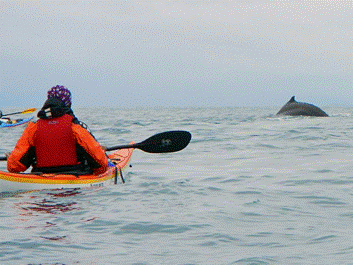 of the chase and stayed
closer to the shore while the rest of us were in hot pursuit. The whales had us
on a string, as soon as we got close they headed further offshore until we were
reluctantly forced to give up. And so the team was split; six of us far out
from the shore while three remained hugging the coast.
of the chase and stayed
closer to the shore while the rest of us were in hot pursuit. The whales had us
on a string, as soon as we got close they headed further offshore until we were
reluctantly forced to give up. And so the team was split; six of us far out
from the shore while three remained hugging the coast.
Heading south
outside
Our inshore group looked on in amazement from
a distance and I commented that it would be funny if one of the whales surfaced
close to them and gave them a surprise. No sooner had the words left my mouth
than a 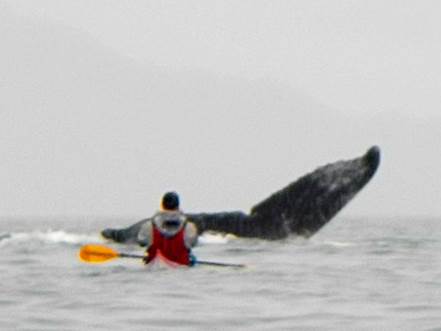 couple of whales did
exactly that, causing Debbie or Vicky to scream in shock. But the whales meant
no harm and just showed signs of inquisitiveness.
couple of whales did
exactly that, causing Debbie or Vicky to scream in shock. But the whales meant
no harm and just showed signs of inquisitiveness.
Carole and I
have seen probably over a hundred whales while sailing but this was certainly a
rare and privileged experience. I had never before had such intimate contact
with these powerful animals and I’ll never forget this time spent in their
company. The whales would probably have let us watch them play for hours but it
was time to leave them and head further south towards our campsite for the
night. It was raining but none of us really cared.
Our
destination was a small isthmus close to
Arriving at
our campsite we glided onto the shingle beach to discover we would not be alone
that evening. There was a couple of tents and smoking embers in a fire. A
chainsaw and a rucksack lay tucked close to a rock. There was no sign of people
but it was obvious that they hadn’t gone far. We discussed whether or not to
stay but it had been a long and tiring day so we decided to set up our tents
and tarp and await the return of the others. While emptying our boats we saw
our first bear of the trip who was swimming the short distance across from
As our stoves
roared and cooked our own food, the original occupants returned by boat. They
were two families and I greeted them saying that I hoped they didn’t mind us
sharing their space for the night. One of the women curled her lip and was
clearly put out by our invasion. Realising that we had no intention of moving
on, she and the rest of her friends and family accepted us and began to chat.
Ian was even invited to share their roaring fire in the rainy evening but by
then I was already in my sleeping bag dreaming of whales.
What a day!! Pete Thomas More
Photos……. Voice
over……..
Approximately 38 Kilometres
Day Three (Sunday) – Applegate Island
to
Well lets be honest after that amazing experience with the whales I
struggled to recall day 3, that’s my excuse for being forgetful and laughing in
 the voice
over as Keith gave me a few hints by pointing to spots on the map. (Now you are
going to have to listen to the MP3)
the voice
over as Keith gave me a few hints by pointing to spots on the map. (Now you are
going to have to listen to the MP3)
Our neighbours on the campsite soon got over the invasion of kayakers
and were very sociable when just about everyone had gone to bed.
The following morning we were up and on the water in good time, after a
few days practice packing the boat becomes much easier as you know just where
everything is going to fit and the food takes up a bit less space.
So we set out on what was to be a mostly murky day paddling, some low
cloud and some rain, but the effect of the whales stayed with me and I really
didn’t mind 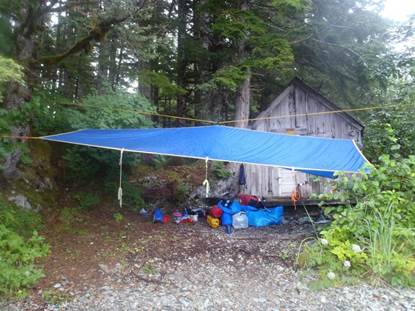 the
weather too much. Surprised my neck didn’t ache with the constant scanning
looking for whales now not bears. Today
the whales didn’t come as close but every now then we spotted the tell tale
spouts of water which now recognized as due to whales not geological features
in the rock.
the
weather too much. Surprised my neck didn’t ache with the constant scanning
looking for whales now not bears. Today
the whales didn’t come as close but every now then we spotted the tell tale
spouts of water which now recognized as due to whales not geological features
in the rock.
We crossed from
I arrived at the waterfall just in time to spot the bear running off, we
sat quietly for a while waiting to see if it would reappear, but we were out of
luck. Falls bay was  off course
full of waterfalls so we filled up all the water bottles before heading off to
find a campsite for the night. It didn’t take too long to reach the tip of
off course
full of waterfalls so we filled up all the water bottles before heading off to
find a campsite for the night. It didn’t take too long to reach the tip of
Space for the tarp and the cooking area looked to be an issue, but along
the beach there was the perfect spot, outside a historical cabin. Once the tarp
was up and tents positioned to everyone’s’ satisfaction, time to cook. Bison
mince was quickly turned into bolognaise sauce and served with pasta. Ian and
Steph never once complained about my cooking – I am sure they were being nice.
Before the weather worsened overnight, Debbie decided to take advantage of the
tide dropping and went exploring the smaller island off the tip of Crafton
Island, her calls of ‘hey bear’ could be heard by all of us, and disturbed an
eagle who flew off to return once Debbie gave up bear hunting and decided to
study the fish left swimming in shallow pools left by the dropping tide.
That was quite enough excitement for one day; we know the forecast
wasn’t great for the next morning so with the prospect of a lie in, I crawled
into the tent to grab some precious sleep………
 Frankie Annan More
Photos……. Voice
over……..
Frankie Annan More
Photos……. Voice
over……..
Day Four (Monday) – Crafton Island to
Point Nowell
The night had been very windy and wet and it was clear that we were
going nowhere. Most of the party slept
in listening to the weather beating down on our tents. As the tide started to drop we were able to
make our way to the porch of the old miners cabin where we had set up our tarp
to give some shelter. A morning of brews
and reading as we all wondered what was going to happen with the weather.
The forecast hinted that the conditions would begin to ease during the
afternoon / evening. We set off at
around 2pm as the wind began to decrease.
However, as soon as we left the shelter of
As soon as the tarp was set up the sun came out, we managed to get a
small fire going and our gear was hung up to dry. As the wind had dropped off it was time for
all the bugs and files to venture out to find anything to eat. During the night a fishing trawler came into
the inlet and anchored. Refreshed we
were ready for a long paddle down to “dangerous passage” and to head towards
Vicky Howell More
Photos……. Voice
over……..
Day Five (Tuesday) – Point Nowell to
The next few days were spent paddling towards our next destination - Icy
Bay via Dangerous Passage. The weather remained calm and we blissfully paddled
our way past floating sea otters and leaping salmon whilst bald eagles soared
above our heads. 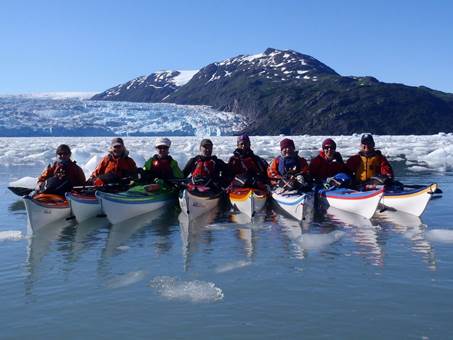
We stopped briefly for a quick snack and a sunbathe, on a small beach
whilst looking at icebergs. From a distance they just looked like white dots on
the horizon but as we paddled closer they were huge, glistening
structures. As a geographer, I couldn't
paddle fast enough in order to see my first iceberg close up. Finally, there I
was just five feet away from a real iceberg. We paddled further through a small
ice field which floated on aqua blue glacial water. On a sunny day, the scene
couldn't get any better-or so I thought.
Around the headland, I was left stunned and completely speechless as I
saw Chenga Glacier for the first time. It was a huge, natural river of ice and
yet again I sprinted forward to get a closer look at one of nature's wonders.
The icebergs became larger and more intimidating. By the time we had reached
the ice field; we were reduced to paddling single file because the ice field
was that dense. I was smiling  from ear
to ear. It was geography heaven for me!
'Now this is an expedition', I thought.
from ear
to ear. It was geography heaven for me!
'Now this is an expedition', I thought.
As we paddled through the concrete like icebergs, the noise of the ice
scrapping the side my sea kayak made me realize why the huge pieces of ice sealed Titanic's fate. In
the distance, seals lazily used the icebergs as sun loungers and looked on as
we carved our way through the ice. After an hour of kayaking through ice cubes
we eventually reached a beach, just around corner from the glacier. Tents were
hastily put up, as the beach was covered in flies -with a big bite! Going to
the toilet that night was pretty spectacular to say the least. It is not often
you have a glacier to watch whilst going to the loo!
That night we fell asleep whilst listening to the glacier carving. The
sound resembled a severe thunder clap and it echoed eerily throughout the
valley. What a perfect day! Steph
Long
Day Six (Wednesday) –
 We left the campsite at the mouth of river
from the Princeton Glacier and paddled around the corner to take a closer look
at the Chenega glacier. It stretched for
several kilometres across the ice front with a large shear face, in places up
to 100m high. We took care not to get
too close in case a large slab broke off creating a large impulse wave which
could have spread out in all directions and may have been large enough to
endanger us. After staying as long as we
dared we headed off through the broken ice field towards the mouth of Nassau
Fjord. A large waterfall cascaded down a
smooth slab of granite and gave several opportunities for photos. We landed on a small rocky beach for
elevenses.
We left the campsite at the mouth of river
from the Princeton Glacier and paddled around the corner to take a closer look
at the Chenega glacier. It stretched for
several kilometres across the ice front with a large shear face, in places up
to 100m high. We took care not to get
too close in case a large slab broke off creating a large impulse wave which
could have spread out in all directions and may have been large enough to
endanger us. After staying as long as we
dared we headed off through the broken ice field towards the mouth of Nassau
Fjord. A large waterfall cascaded down a
smooth slab of granite and gave several opportunities for photos. We landed on a small rocky beach for
elevenses.
After an hour or so we paddled off around the point and back into 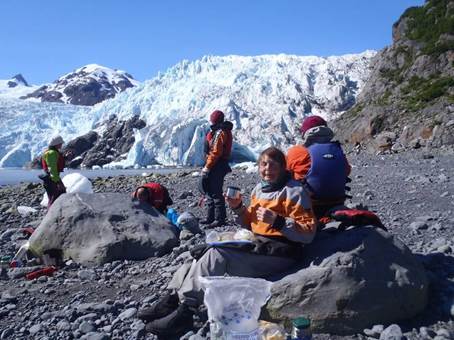 rumbled and groaned as millions of tonnes of
ice and rock ground along its bed. Every
now and then there was a large crack as pieces fell off into the water at its
snout. After the obligatory photographs
we landed on a flat beach in front of the glacier for elevenses.
rumbled and groaned as millions of tonnes of
ice and rock ground along its bed. Every
now and then there was a large crack as pieces fell off into the water at its
snout. After the obligatory photographs
we landed on a flat beach in front of the glacier for elevenses.
MSR stoves were soon fired-up and brews put on while we admired the view
before us. There was a strong breeze
blowing off the glacier. This was caused
as the air was cooled by contact with the ice field that fed the glacier and
now heavier than the surrounding air, descended rapidly down the face of
glacier and away down the fjord. We
gained what shelter we could by sitting behind the glacial boulders strewn
around the beach. Suddenly there was a
thunderous crack as an enormous lump fell off the front of the glacier. We watched for about a minute to see if it
would have any effect. Bergy bits bobbed
a little and seemed to absorb most of the energy. About 30 seconds later the sea started to be sucked
out just like a little tsunami. Then waves started breaking as the water rushed
in again. It started to break around
some of the kayaks which had been carried what we thought was a safe distance
up the beach. Ian Bells kayak and those
nearest to it stated to be washed out to sea.
We all ran down the beach to grab hold of any kayak we could. Fortunately the waves stopped after about a
minute and we had managed to save everything by grabbing hold and moving it all
up the beach.
After elevenses we climbed back into our boats and paddled over too some
magnificent waterfalls that descended from the numerous snow patches on the
shaded north side of the Fjord. We
decided to fill our water bottles as we did not know where we were going to
make camp that night. As we paddled out
of the Fjord we kept happening upon floating, occasionally sleeping and often
feeding sea otters. The breeze died off
as we moved further and further from Tiger Glacier and the water went mirror
calm.
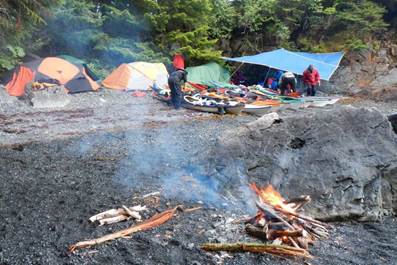 The plan
was to paddle the 12 or so miles out of
The plan
was to paddle the 12 or so miles out of
Keith Steer More
Photos……. Voice
over……..
Day Seven (Thursday) – Icy Point to
I awoke at our sheltered campsite at Icy Point with the steady sound of
rain battering the outside of the tent and immediately thought perhaps we would
be allowed a short lie in to see if the rain abated. Of course not! “This was
an expedition not a holiday” as Keith reminded us every so often. On the water
by 9 so everything was packed up in the rain and both the inner and fly of the
tent was soaking wet. We 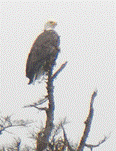 set off
into
set off
into
It was not long before Keith put both his hands on head in the bear’s
ears mimic pose to let us know he had sighted a Black Bear on the beach ahead,
we approached as silently as possible hoping to sneak as close as possible
before he noticed or scented us. The American Black Bear (Ursus Americanus) is
a medium sized bear native to 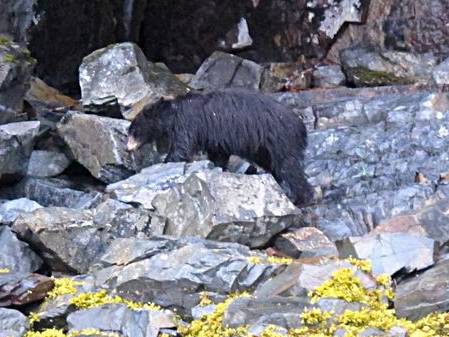 into the
undergrowth behind the beach but on this occasion the area behind the beach had
a small rocky bluff which prevented the bear escaping quickly. It therefore
began traversing the beach to find an escape route and this allowed us to get
closer and have a better view, as we drew closer the bear became more agitated,
and finally when Kirk approached too close it made a exit by climbing up a tree
to make its escape. When on land, as in Gordon Buchanan’s BBC program, we
walked around calling “ hey Bear” so they would be aware of our presence and
hopefully retreat.
into the
undergrowth behind the beach but on this occasion the area behind the beach had
a small rocky bluff which prevented the bear escaping quickly. It therefore
began traversing the beach to find an escape route and this allowed us to get
closer and have a better view, as we drew closer the bear became more agitated,
and finally when Kirk approached too close it made a exit by climbing up a tree
to make its escape. When on land, as in Gordon Buchanan’s BBC program, we
walked around calling “ hey Bear” so they would be aware of our presence and
hopefully retreat.
We carried on paddling in the rain hoping for another viewing and Pete
and Keith spotted another bear some distance off which disappeared by the time
they paddled over for a better view. After a while we rounded an island in the
bay, and headed across to the other side towards a beach with a overhanging
cliff that Keith had spotted that would give us some shelter for our elevenses.
Stoves were set up and various beverages were brewed, and as the biting flying
insects were held at bay by the rain, a fairly short but relaxed break was had.
Following this we hugged the
coast around to head out of the bay, and towards
The rain continued to fall and on erecting our very wet tent from the
morning, we discovered that it was now leaking badly. The thought of a long wet
night was in prospect with the worry that the rain could continue for days, my
only solution was to open up one of the aluminium foil emergency space blankets
and drape it over the top of us. Unfortunately it wasn’t big enough for two so
we were still getting our sleeping bags wet. Luckily Kirk came to the rescue
with a bivi bag for Pete and I slept wrapped in tin foil like a turkey waiting
for the oven. With waterproofs over our heads we had a not too unpleasant night
and although damp in the morning, to my relief the rain had eased.
Packing up the next morning we set off and as the sun came out and we
gradually warmed up and dried off. All was well again.
Carole Thomas More
Photos……. Voice
over……..
Day Eight (Friday) – Delenia Island
to
By this time in the trip my recollection of days has become a little
hazy to say the least. I am pretty sure
as we were starting to pack the boats to leave Delania Island that I was
greeted by a “Bon Annee” from Keith, and I was convinced that Friday was indeed
my birthday, and what a way to celebrate it in style – in Prince William
Sound. Looking on the calendar since
returning I see the 25th was actually a Saturday,  so hey ho,
what’s one day here or there?
so hey ho,
what’s one day here or there?
Having broken my spork (on its
first outing) Pete very kindly presented me with a new birthday spork – bright
orange so it’s easy to spot on the floor, and Vicky gave me a pair of wooden
moose head salad servers. Bought in
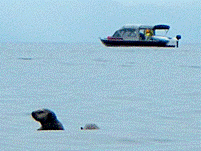 Thanks
Pete and Vicky – I will remember this birthday (whichever day it was) for ever.
Thanks
Pete and Vicky – I will remember this birthday (whichever day it was) for ever.
Leaving
The crossing from Grit Point to Shoulder Point took about an hour and a
half, the sea smooth and we made good time.
The whales seemed to be having a day off and this was one of the very
few days we didn’t see any. After a
brief rest on the water at Shoulder Point we set off up the coast to the north
end of 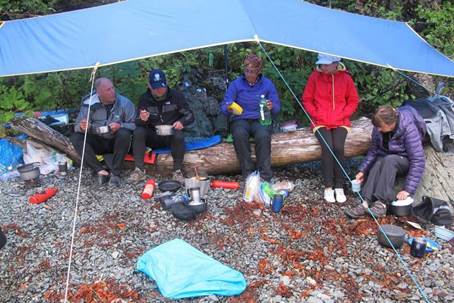
I am pretty sure there was no lunch stop on this day and that I was
ravenous by the time we had put the tent up.
We had supper watching sea otters doing their usual floating on their
backs stuff whilst crunching delicious shellfish. Pete had a go at tossing the caber – or was
it collecting firewood? Fires had become
a part of the evening ritual now, using the leave no trace below the high water
mark method. It was good to get rid of
rubbish before it began to stink. Taking
your spray deck off having had a bag of trash (see, getting to grips with the
lingo) in your cockpit all day was not pleasant. Plus, it might have contaminated my pineapple…….
Woke very early next morning to hear the sea sloshing around quite a lot
on the shingle but by the time we got on the water to depart all was calm and
tranquil again and we were treated to spectacular views of snow capped peaks
many, many miles away on the mainland to the north. 
P.S. Pineapple made it to Day 10 before we ate it – it was absolutely
delicious despite having been kicked around by my feet in the cockpit, drenched
in sea water and bashed about in the bear cache every night (except one –
whoops) All trips should have a pineapple!
I bet it was the first one to make it to
Debbie Hughes More
Photos……. Voice
over……..
Day Nine (Saturday) –
We had stayed the night at Herring point, an excellent  campsite
with stunning views across the sound to the mountains in the north. We got up in the morning and Pete wanted to
look around the corner so undertook a small excursion out to the headland. Once
we were all afloat we headed off to make our longest crossing of the trip
(approximately 11 miles) across to
campsite
with stunning views across the sound to the mountains in the north. We got up in the morning and Pete wanted to
look around the corner so undertook a small excursion out to the headland. Once
we were all afloat we headed off to make our longest crossing of the trip
(approximately 11 miles) across to
Once on
After a very late lunch we started to look for a campsite. The plan was paddle around in Port Nellie
Juan to explore for a few days.
Unfortunately the weather was about to break with very strong winds
forecast. We could not afford to be
caught in the exposed Fjord so we decided to put in the miles and cross over to
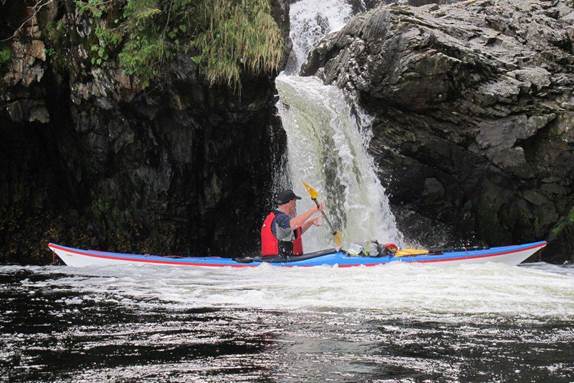
As we crossed the three miles we saw lots of the now familiar spurts of water
indicating whales. They were back but
also had a large flotilla of watching boats. The Whales popped up right in
front of us and I could not contain myself and decided that I had to power over
towards them. As I did this the others
reminded me that I risked a $1000 fine for chasing or harassing any marine
mammals so I eased back as I realised that there were plenty of other small
boats around to observe my actions.
Despite this I did get a number of close views of the whales with a
number of broaches and blows before they had decided that they had had enough
of spectators for the day and swum off out to sea again.
We found a good campsite in the shelter of the passage but we needed
water so explored Picturesque Cove. We
found a number of streams; the second one had a 100 or more dead salmon strewn
all around. This was obviously the
result of bears. We paddled into the
stream stealthily and caught a glimpse of a small black bear wandering off into
the undergrowth. The third stream had a
small waterfall and some of us had a little bit of sport trying to fill water
bottles from the boats (there was no way to climb the small cliff and access
the water sensibly).
We returned to the beach to make camp after a long, long day but at
least we were now within striking distance of the finish.
Kirk Williams More
Photos……. Voice
over……..
Day Ten (Sunday) – Picturesque Cove
to Surprise cove
The weather had been quite kind to us over the course of the trip but my
sea kayaking skills were tested on day 10
rounded the point from Culross passage and 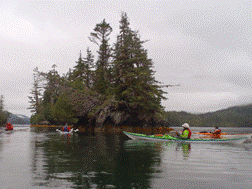 crossed
the Sound heading for Surprise Cove. We had received radio reports that the
winds would become extremely strong over the next few days so we had to cross
the Sound whether we
crossed
the Sound heading for Surprise Cove. We had received radio reports that the
winds would become extremely strong over the next few days so we had to cross
the Sound whether we 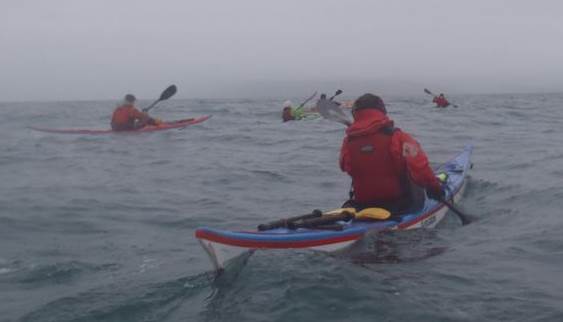 liked it
or not; as it was going to get a whole lot worse. It was the first time I had
experience rough seas in a sea kayak. As the waves pushed some of us towards
the rocks; both the incoming waves and the reflective waves battered my kayak.
At one point, whilst I was at the trough of a wave, I could not see the others
trying to head further out to sea. My heart was racing as I was bombarded by
massive waves. Eventually, through sheer determination and “not wanting to
die”, I paddled through the huge waves and high winds and made my way out into
deeper water. It was like being in a “tsunami”. After another hour of paddling
and praying, I was relieved to see Surprise Cove. This was extremely sheltered and it even had
wooden platforms for our tents.
liked it
or not; as it was going to get a whole lot worse. It was the first time I had
experience rough seas in a sea kayak. As the waves pushed some of us towards
the rocks; both the incoming waves and the reflective waves battered my kayak.
At one point, whilst I was at the trough of a wave, I could not see the others
trying to head further out to sea. My heart was racing as I was bombarded by
massive waves. Eventually, through sheer determination and “not wanting to
die”, I paddled through the huge waves and high winds and made my way out into
deeper water. It was like being in a “tsunami”. After another hour of paddling
and praying, I was relieved to see Surprise Cove. This was extremely sheltered and it even had
wooden platforms for our tents.
We spent the next two days at Surprise Cove as there was a storm out to
sea. At Surprise Cove though, the sun shone gloriously and we sat on the beach
sheltered from the 50 knot winds. The beach became a laundrette as we set about
drying our sodden kit and we also dried ourselves out with two days of
sunbathing, reading, listening to music and relaxing. Steph Long More
Photos…… Voice
over……mp3..
Day Eleven (Monday) – Surprise cove –
Storm Bound
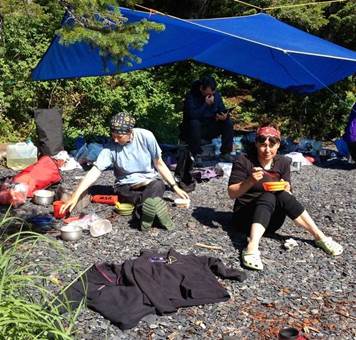 We woke up
in Surprise Cover after a very wet night.
The tents, paddling gear and everything was absolutely soaking but it
was now clear skies and promised a very sunny day. We were still waiting for the storm to roll
in which was forecast to appear in the afternoon. The forecast was
We woke up
in Surprise Cover after a very wet night.
The tents, paddling gear and everything was absolutely soaking but it
was now clear skies and promised a very sunny day. We were still waiting for the storm to roll
in which was forecast to appear in the afternoon. The forecast was 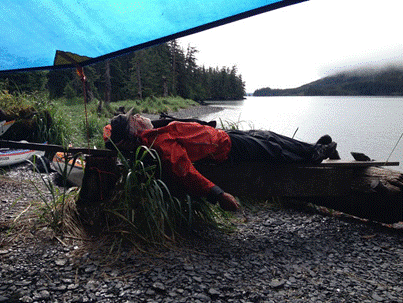 for 50
knot winds which would make paddling a tad difficult. We all had a very lazy day spent drying our
kit, swimming, cooking and generally recovering from the previous 10 days.
for 50
knot winds which would make paddling a tad difficult. We all had a very lazy day spent drying our
kit, swimming, cooking and generally recovering from the previous 10 days.
By the afternoon the breeze had started to pick up, the tarp began to
move around, the trees started to bend and the water had bigger ripples. By the evening the wind started to really
gust through. That night we were worried
that our tent was going to be squashed if a tree fell down on top of us. Fortunately Surprise Bay was extremely
sheltered so we all survived in tact.
However we were glad that the tarp had been taken down as precaution.
Vicky Howell More
Photos……. Voice
over…….mp3.
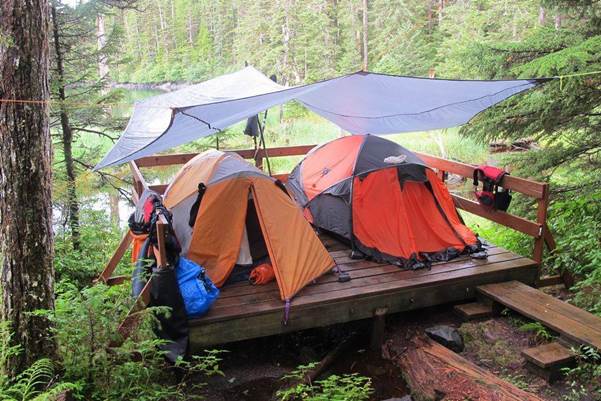 Day Twelve (Tuesday)
– Surprise Cove – Storm Bound
Day Twelve (Tuesday)
– Surprise Cove – Storm Bound
Another day at Surprise Cove. A
really beautiful sunny day with a nice lie in.
We slept on the lovely tent platforms with the security of my “rock
solid quasar”. The winds were a little
tasty during the evening /  night,
with reportedly 40-50 mph winds.
Fortunately there were no trees down on us. A coffee and breakfast at about 10:00
am. I spent the rest of the morning
exploring the state park trails behind the campsite, I found a small lake with
what looked like a stream emanating from it.
It later turned into a good little waterfall.
night,
with reportedly 40-50 mph winds.
Fortunately there were no trees down on us. A coffee and breakfast at about 10:00
am. I spent the rest of the morning
exploring the state park trails behind the campsite, I found a small lake with
what looked like a stream emanating from it.
It later turned into a good little waterfall.
All my kit was now bone dry so I spent the rest of the day reading and
relaxing. The usual evening meal of
creamy potato soup, salami and pasta.
I was now looking to get back in to a kayak and getting back onto the
water tomorrow. A good holiday day! Kirk Williams More
Photos……. Voice
over…….mp3.
Day Thirteen (Wednesday) – Surprise
cove to Squirrel Cove
It was going
to be a long day and the plan was to paddle deep into Blackstone Bay and visit
the many glaciers that terminate at its head.
Emerging from
my pit at 5 in the morning to ensure we got on the water by 7 to take advantage
of the flood tide and light winds, I watched the dawn gradually light the
settled sky following our enforced two-day shelter from the predicted 50 – 60
knot winds. Feeling a bit lethargic and slow after our restful couple of days
off, I paddled at the back of the group and marvelled at how the low dawn light
illuminated our team and the tops of the mountains behind them reflecting in
the calm waters. Our stay at Surprise Cove was a good, safe and sheltered one
and it allowed us all to recharge our batteries, dry our kit and generally sort
ourselves out. What a pity that this next paddle was to be the second to last
one we would do on our Alaskan odyssey.
 Soon after paddling around the corner from
Surprise Cove and into open water a Bald Eagle flew over our heads. It was one
of dozens that we saw on the trip but it’s hard to be blasé about seeing such a
large and noble looking symbol of the USA flying just meters away from us. Very
close to Whittier now, our start point and end destination, we heard the buzz
of fishing boat engines as we paddled deeper into Blackstone Bay.
Soon after paddling around the corner from
Surprise Cove and into open water a Bald Eagle flew over our heads. It was one
of dozens that we saw on the trip but it’s hard to be blasé about seeing such a
large and noble looking symbol of the USA flying just meters away from us. Very
close to Whittier now, our start point and end destination, we heard the buzz
of fishing boat engines as we paddled deeper into Blackstone Bay.
A few hours
passed carelessly as we all paddled steadily towards our goal. Ian stopped
suddenly and signalled to the rest of us by waving fingers of both hands on
each side of his head; by now we recognised that this was a signal that a bear
was close by. Sure enough, there it was, initially close to the shoreline and,
spotting us by smell, sound or sight well before we saw it, the bear was
already heading uphill and away from whatever danger it thought we represented.
Perhaps it was alarmed by 9 multi-coloured smelly fashion victims gawping in
its direction. Whatever the reason it soon evaporated out of sight and we were
left only with the memory and perhaps a blurry photograph or two.
Although the
tide was flooding towards the head of the bay where the glaciers where, at
times we experienced a noticeable counter current that we had to paddle
against. This came from the fresh water flowing from the melting glaciers and,
being less dense than sea water, the fresh water flows on top. The sea water
which can flow in the opposite direction below the surface as it probably was
on this occasion.
Pressing on,
Willard Island became obvious to our right in the centre of the bay. This area
gained notoriety in Paul Twardock’s book “Kayaking & Camping in Prince
William Sound” as he describes how a couple paddlers lost their lives there
when they capsized in cold water overfalls probably caused by Spring tides and
adverse winds. Thankfully it was a calm day and we saw only slight evidence on
these “skookemchucks” as the indigenous “First Nation” people call overfalls.
We stopped briefly for elevenses on the terminal moraine that connects the
mainland with Willard Island and forms a glacial dam, separating shallow, cold,
brackish water close to the glacier from warmer and deeper seawater on the
other side. From our unusual snack venue we could clearly see many of the
glaciers we were about to get much closer to. In Blackstone Bay alone, there
are seven glaciers and many of them tide line, that’s to say they actually
terminate in the sea. The tide was coming in quickly so we couldn’t stay there
long as the moraine would quickly cover. We were forced to gobble our elevenses
as fast as we could and get back in our boats. This was a frequent problem for
Frankie who suffered from severe indigestion as a result. Unfortunately, fly
ridden beaches, encroaching tides and even mini-tsunamis caused by calving
glaciers often forced us to get back on the water sooner than we had hoped.

After passing
a number of spectacular glaciers with deep crevasses on our left that didn’t
tide line, we were soon at one that did. Blackstone Glacier falls gradually
from a vast snow mass into the sea and the sound of it calving can be heard
many miles away. In fact, both Debbie and I heard an unmistakably deep rumbling
noise about 4 the previous morning at our campsite some 25 kilometres away.
It’s quite likely that we were listening to this glacier calving. For those that
don’t know, glaciers are generally incredibly slow moving but even the slowest
of them terminate somewhere in a tangled mass of broken ice. When this happens
at sea level, under the force of gravity, the glaciers “calve” great chunks of
ice that collapse suddenly in a crashing splash into the sea. Some of the deep
throated rumbling noises come from glaciers inextricably moving over massive
rock beds and some of the noise comes from this calving action. Either way, the
noise is unforgettable and certainly makes me feel like an insignificant speck
on a powerful and awesome landscape.
The ice floating on the sea from this constant
calving can be heavy and congested, choking further progress, or it can be
sparse with leads opened up by the wind and tides. It’s possible to force a way
through and today, this job fell to Debbie who did a great job opening up a
passage for the rest of us to follow line-astern. It’s great being amongst the
brash ice as it’s called. You can feel the cold water even through the thick
padding of a Nigel Denis Explorer seat and the sound of it melting in the sea
water sounds like you’re floating around in a bowl of snap crackle and pop Rice
Crispies, especially since the water is sometimes milky white from the finely
ground glacial till, a rock powder resulting from millions of tons of ice
grinding away over bedrock for hundreds of thousands of years. As long as it’s
not too choked, the ice moves out of the way easily if a bit alarmingly as it
makes grinding noises against the kayak hull and prevents the paddles from
landing in the water in the familiar way. Without the aid of any illegal
substances, most of us could see all sort of odd shapes in the contorted shapes
of the melting ice. Animals, cartoon characters and things you can’t mention
before the watershed were all there on display waiting for us to catch them at
the right angle as we paddled past.
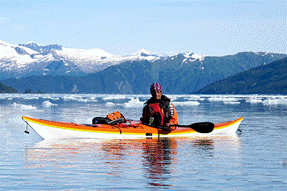
Around the
next headland was yet another glacier and yet another one around the next.
Alaska has millions of them and we hadn’t begun to scratch the surface. One of
us saw another group of kayakers about a kilometre or more away. They looked
tiny close to a massive and powerful waterfall emerging from some hanging
seracs that terminated yet another glacier as if in mid-air. This was apparently
the scene of another kayaker’s death caused when one of these seracs collapsed
and obliterated the unfortunate paddler. Enough said; we didn’t venture any
closer to the waterfall and left the other unknown party to take their own
risks. It was just a step too far for us and looked far too close for comfort.
By now the
tide had turned and we headed back out of the bay on the ebb with a slight
breeze at our backs. The going was easy and we stopped for lunch on a shingle
beach that gave us an incredible view of the circ of mountains and icefields
that fed the seven glaciers we had just negotiated. Just before we landed on
our lunch beach we heard a loud rumble from one of the glaciers we had just
left behind. We turned just in time to see a massive impulse wave emanating
from where the ice had plunged into the sea. The wave swept the rocky walls for
hundreds of meters before being finally absorbed by the brash ice and the body
of water. Fortunately, we far away from its reach. The sky was blue and we were
treated to a display from two float planes that flew their rich customers on a
sightseeing tour out of Whittier or maybe the sea plane base at nearby
Anchorage. Again, they were tiny against such a grand backdrop and served as a
reminder that we were once more getting closer to civilisation after a couple
of weeks in the wilderness.
Leaving
Willard Island to our right, we headed further and further out of the bay until
we eventually reached Decision Point, our campsite on day 1. Leaving this
behind, we were back in Passage Canal with Whittier at its head. Our
destination for our final campsite was Squirrel Cove and while cooking our
final evening meal on the beach, a squirrel obligingly appeared on a nearby
tree.
We all slept well after such a long day, knowing that tomorrow would be
our final paddle back to base and back out of the wild.
Pete Thomas
More
Photos……. Voice
over……mp3.
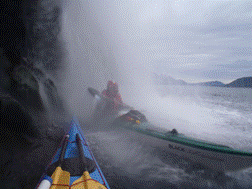
Approximately 58 Kilometres
Day Fourteen (Thursday) – Squirrel Cove
to Whittier
The wind was not as strong as the
forecast had suggested and we had a reasonably leisurely start (certain
individuals – names 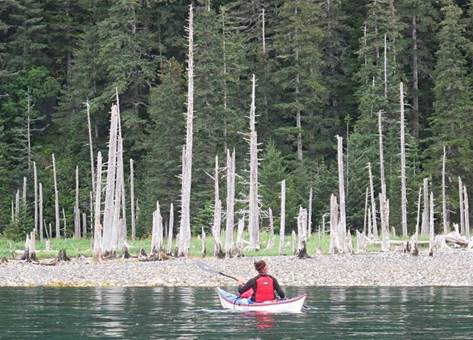 withheld -
did not want to carry their boats too far, so we waited for the tide to make
its way up the beach and with only a short day to paddle there was no real
rush. It was not raining so the tent and most other kit packed away still dry;
good news for fight home for those of us with little room to spare on weight
limits. So we left the campsite at about 9.00am having packed our boats for
final time on this trip. As we left;
Carol demonstrated a perfect launch without boat scratching by sitting a stride
her boat, pushing off and then getting in once a float
withheld -
did not want to carry their boats too far, so we waited for the tide to make
its way up the beach and with only a short day to paddle there was no real
rush. It was not raining so the tent and most other kit packed away still dry;
good news for fight home for those of us with little room to spare on weight
limits. So we left the campsite at about 9.00am having packed our boats for
final time on this trip. As we left;
Carol demonstrated a perfect launch without boat scratching by sitting a stride
her boat, pushing off and then getting in once a float
From our last camp site we headed North; across Passage canal to paddle
back to Whitter on the north side of the fjord having departed on south
side. We stopped about half way along on
a very fly-infested beach for elevenses. This then gave us the opportunity to
visit kittiwake falls before heading back south into Whitter. The Falls are a
local place of interest visited by Cruises ships, Prince William 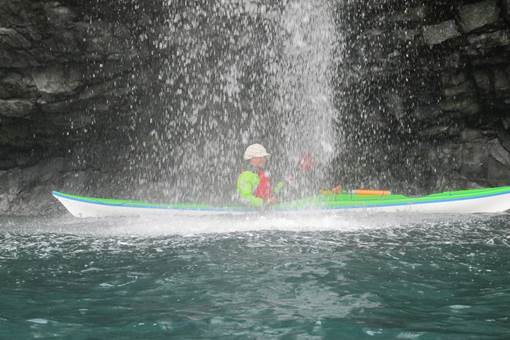 Sound
ferries and local Kayak guides. As the name suggest there is a large coloury of
Kittiwakes nesting here next to a couple
of spectacular waterfalls. Keith followed by me paddle under the larger falls
for the photo opportunity! Kirk and a
couple of others where brave enough to try the smaller one. Kirk had not
bothered with his cag so avoided the larger falls. As we left the falls we watched the tour boats
leaving the harbour with the day trippers going to the glacier. We then paddled
in to Whitter just as Tom arrived to pick up the boats. Perfect timing.
Sound
ferries and local Kayak guides. As the name suggest there is a large coloury of
Kittiwakes nesting here next to a couple
of spectacular waterfalls. Keith followed by me paddle under the larger falls
for the photo opportunity! Kirk and a
couple of others where brave enough to try the smaller one. Kirk had not
bothered with his cag so avoided the larger falls. As we left the falls we watched the tour boats
leaving the harbour with the day trippers going to the glacier. We then paddled
in to Whitter just as Tom arrived to pick up the boats. Perfect timing.
Once all the kit was unpacked and boats checked we thanked Tom and said
goodbye. We then packed our personal
belongings for the journey home and went to the local bar for some excellent
fish and chips while we waited for Mr Go Purple to collect us. After an hour or
so Keith texted him to check he was on way.
Good job as He had confused the dates
 and was
not expecting us until the next day. He promptly sent his son to collect
us. We used the extra time well to
visit the local fudge and souvenir shop and to look around Whittier.
and was
not expecting us until the next day. He promptly sent his son to collect
us. We used the extra time well to
visit the local fudge and souvenir shop and to look around Whittier.
Back in Anchorage we checked into the motel for showers and to get tidied
up for journey home. We all went to celebrate the end of our trip with a meal
out before starting to split off for our journeys home. Kirk was heading back
to California to meet up with Gerry and Karen; Vicky was staying on a couple
more days to explore the interior and the rest of us where leaving in the
middle of the night to fly home to Manchester.
Stephanie was leaving us in Amsterdam to go back via London.
One of the best trips I have been on, Great group of people, special
place. Thanks Team, and partially to Keith for coordinating it all. Ian
Bell More
Photos……. Voice
over……mp3.
Advice
for future trips:
1/
Food available from Fred Mayers from 6:30am / Seyers Mall 24hrs or Sainsbury`s
on route.
2/
Getting to Whittier is relatively easy (train, hire car or shuttle bus). We used go purple shuttles this time. ($255 each way for whole group plus Gas,
tolls and tips - Garry) 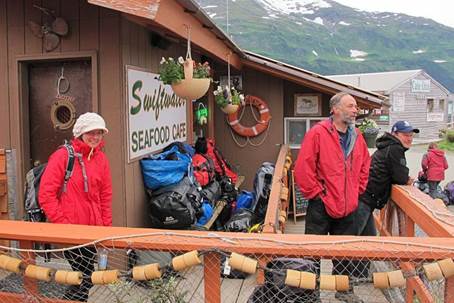
3/
UK style sea kayaks available for hire from Tom Pogson (alaskakayakschool.com) (cost was $648 each
including delivery, top of the range paddles, BA, Flares and Pepper Spray etc)
4/
Need bug head nets in worst areas. (Although late August is the best time to go
rather than July.
5/
Large lightweight tarp is very useful to cook under and for shelter from the
rain.
6/
All stoves should be of the same fuel in case one has a mechanical problem.
Such a long expedition means that you take only enough fuel for yourselves.
7/
Tents should be capable of pitching on rounded pebbles on the beach immediately
above the tide line. Do not expect to use pegs in the conventional way but they
can be buried sideways with the guy clove-hitched onto the middle. (similar to
a dead-man or snow stake) They should be
3+ season tents and be pretty waterproof.
In very heavy rain a spare tarp can be hung over them to shield them
from torrential rain.
8/
Paul Twardock`s book “Kayaking and Camping in Prince William Sound” A Kayaker's Paradise is an excellent
reference. National Geographic publish a topographical, waterproof map of the
west of the sound (Sheet 761)
9/
Keep bear safe! All food needs to be sealed x 3 (2 zip-locked bags + 1 dry bag)
and stored overnight away from the sleeping area (50m). Processed foods are far
easier to keep bear safe (soup and pasta etc) and are easier to prepare. Tooth paste and wash kits kept with foods –
not in tents. Hand flares are probably better than pepper spray as defence
against marauding bears. It is impossible to hang all your food for a two week
expedition so a bear cache is used covered with a tarp and pots etc hung on the
outside to try and alert you if it is raided.
10/
Neoprene boots with over trousers are ideal for keeping your feet dry and
launching boats on the gravel beaches. (Wellington Boots would do a similar job
but may not be as comfortable)
11/ $12 toll on
tunnel to Whittier / Lazy Otter for charter boat drop-off or to pay for parking
by the small beach under passenger ferry ramp.
Tunnel into Whittier is at half-past the hour and out of Whittier on the
hour. (Except when a train is going
through it)
Discussion
of the whole trip…….mp3.
Pete Thomas,
Carole Thomas, Debbie Hughes, Vicky Howell, Steph Long, Frankie Annan, Keith Steer,
Kirk Williams and Ian Bell










